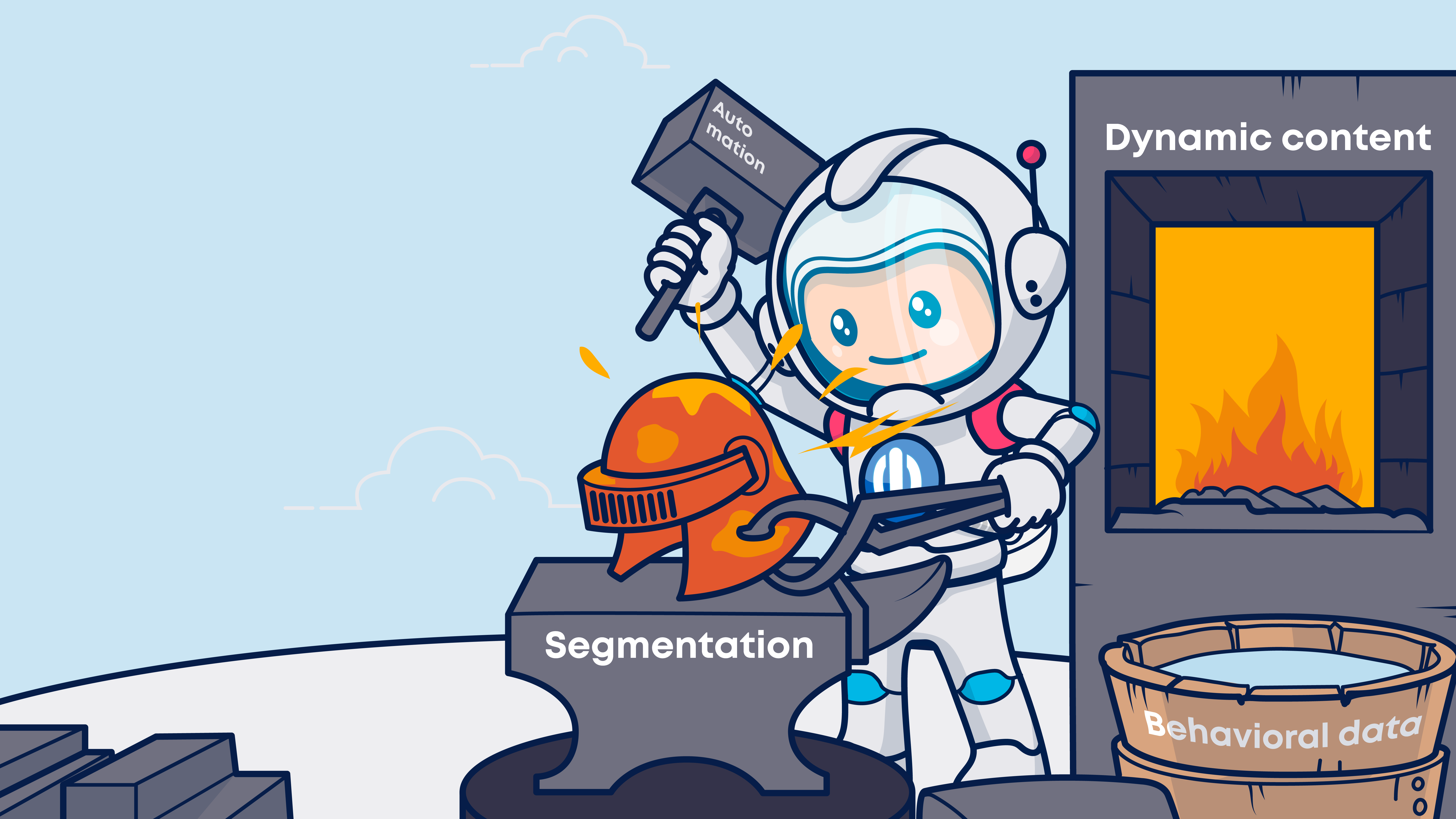For email personalization to work, it needs to go beyond the first name. Learn all the ways you can do email personalization, including changing entire blocks of text, images, subjects, CTA offers, and so much more. If you want to learn how to create perfect, personalized emails, own and bookmark this post.
Personalization is all around you. It’s in your shirt, in the coffee you’re drinking, it’s on Netflix, it’s your profile image, it’s everywhere.
And we love it that way.
Sure, nobody is happy with the fact that someone has their data, but in some mediums, if there’s no data, there’s no value offered, and we really hate to waste our time.
That’s why we enter data into fields. We expect a better experience in return.
But what’s the cost?
People don’t care that much as long as they’re getting something in return.
- Would you like to get your delivery late?
To get your delivery on time, you need to provide your address, time you’re available, and credit card details.
- Would you like to receive clothes that don’t fit?
To get that perfect fit, someone will need your data.
Most people learned to live with the tradeoff, and they’re even happy about it as long as they conceded to it, and there’s no abuse of any kind.
With nearly unlimited access to information and plenty of distractions, we are living in an attention economy. People simply don’t have enough time each day to pay attention to everything presented to them–streaming TV, podcasts, blogs, newsletters, actual human interactions–the list is endless.
Email marketing contributes to our input overload, too. Inboxes overflow with email messages from colleagues, friends, family, and brands, and consumers have become picky about which ones they open.
To be among the emails that earn an open, you have to capture your subscribers’ attention.
How do you do that? Through personalization.
In this article, I’ll unpack why today’s best email campaigns include many data points and how you can use personalization to win your customers’ attention with the data they gave you.
What is email personalization
Your marketing campaigns need to fit your subscribers like a glove to defeat your rivals in the inbox. Not a big ol’ floppy mitten–a glove.
Your subscribers expect you to pay attention to their interests and needs if you want them to pay attention to your emails. I’m not talking about dropping your customers’ names at the top of a generic email. That wouldn’t impress my 92-year-old grandma.
I’m talking about customized iron-clad email experiences!
Now, I’m sure that you’re quite the craftsperson, rivaling the wordsmiths of old and can create piercing one-liners and the sharpest of slogans. Your skills are second to none. But your skills are all for naught if your creations don’t fit your customers.
Nobody wants to experience chafing because you didn’t invest in the fitting process.
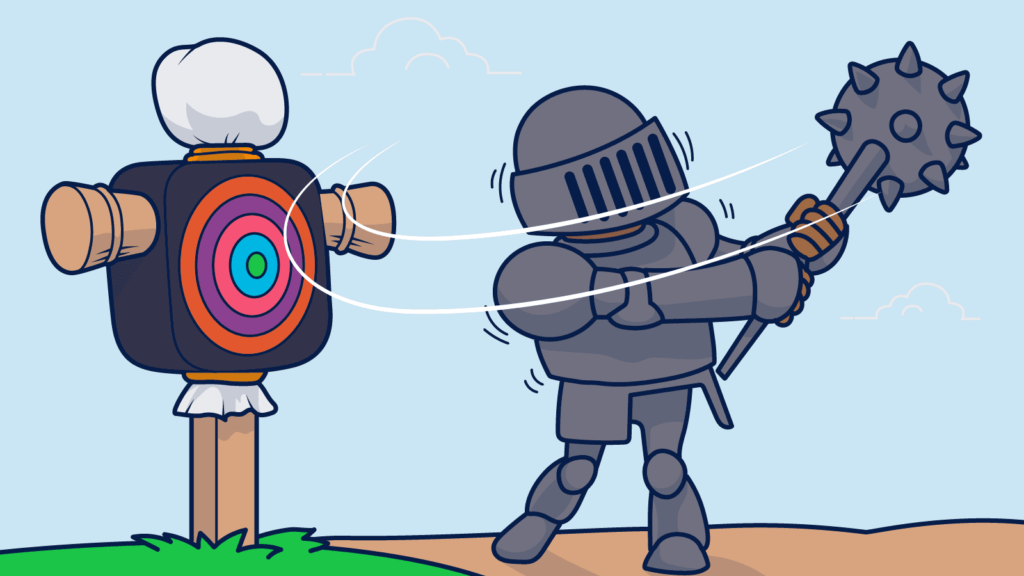
To forge a relationship with your customers and earn their trust, your suit of messages, CTAs, designs, and data points must be tailor-made for them.
Yes, I won’t dance around it 🙂 Non-personalized marketing is like a generic suit of armor. It has all the right materials and looks like it should work, but it does nothing for your customer.
When you personalize your email to fit each recipient like a gauntlet, er, glove, then your campaign becomes a force to be reckoned with.
Don’t get me wrong. Non-personalized marketing has its place. But even when you’re working on the awareness part of the funnel, there’s a touch of the persona, and you try to connect to the needs and pains before anything.
Nonetheless, If these adverts were suits of armor, some people might find them easier to wear than others. They might chafe a little. The knee joints would be too tight, or the shoulders would be too broad. No one would be completely satisfied with their suit.
Your email campaigns can do better than this. With the right data points and technology, you can create one-to-one experiences at scale. You can create content that fits each of your subscribers like it was made for them–because it will be.
Modern email marketing personalization begins with the basics of using templates that insert your subscribers’ names into their messages. Today it already includes sending different messages to different segments and micro-segments of your audience. And, the most sophisticated personalization enables you to combine real-time data with dynamic content and automation to capture an on-the-spot need or pain and create hyper-personalization in each email.
Why is personalization important in email?
Making suits of armor to fit each individual definitely gives the best results for our brave protagonists themselves. However, it’s also labor and resource-intensive for you, the ‘smith’. Would it not be easier to make lots of more generalized suits from the best molds possible and leave it up to your customers to (literally) knock them into shape?
That might work if your customers are so desperate for your product or service that they’ll take whatever you give them. But they seldom are. If you don’t want to make them a bespoke suite of solutions, there’s a smith down the street who’s happy to do it, and he’s probably open 24/7.
Do that many people really prefer personalization?
Surveys say yes. Seventy-five percent of people say they prefer to receive personalized messages and offers from brands, and 72% of consumers say they will only engage with personalized messages.
Plus, customers with high expectations often deliver the highest ROI.
According to a report by Epsilon, consumers who prefer personalization are 10x more likely to be high-value customers (making 15 or more transactions per year with a brand) compared to consumers not interested in personalization. A separate survey found that 80% of shoppers are more likely to shop with brands that personalize their experience.
Beyond serving up content that is of specific interest to them, surveys find that consumers want personalized messages because they feel more connected to brands.
Personalization can help you build brand loyalty. This loyalty is a valuable asset in a world where customers have plenty of options.
- 84% of consumers say that to win their business, brands need to treat them like a person, not a number.
- 56% of loyal consumers say they would stick with their favorite brand even if offered a cheaper alternative.
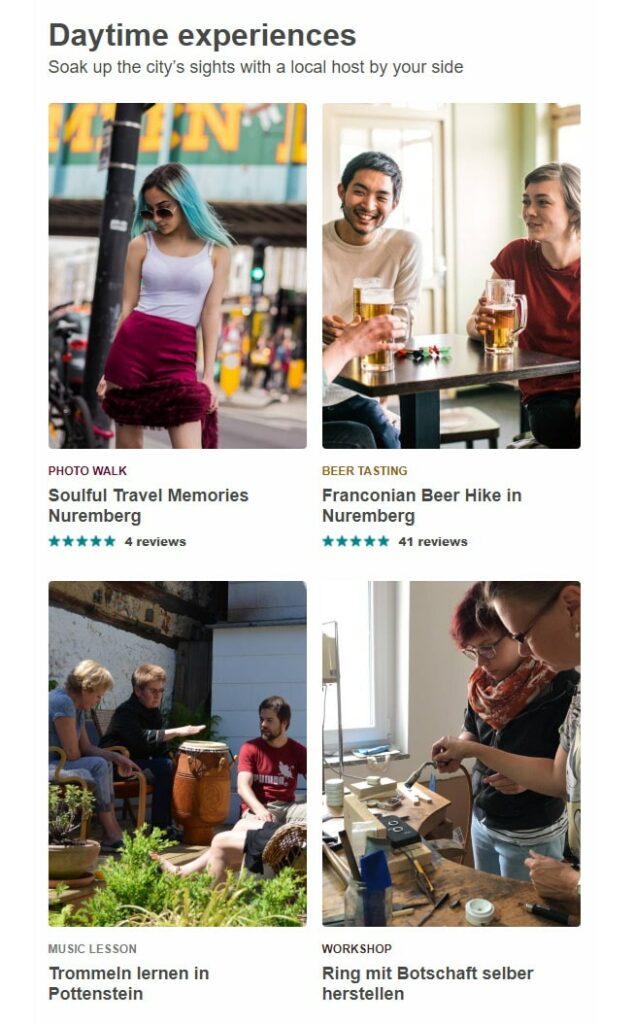
In this post-purchase email, AirBnB adds value and builds brand loyalty by providing its customer with a destination and date-specific list of things to do.
What’s the bottom line?
Nearly every marketer will be using some form of personalization in 2021. Consumers expect it, and they expect it to be useful, contextual personalization that gives them a good reason to give you their attention.
In the following sections, I’ll walk you through the steps you can take to develop creative, personalized email campaigns that cater to your customers’ interests and boost your revenue. It starts with gathering information.
How do you personalize your emails?
If the only measure you had was the height of your would-be champion (yes, a happy customer will champion your cause for free), you could probably begin making them a suit of armor. But you’d have to do a lot of guessing.
How wide should you make that breastplate? Will the helmet fit? The more information you have, the better your fit will be.
Similarly, the more you know about your email subscribers, the more you can tailor your messaging.
When collecting customer data points, the most effective way is to use a combination of strategies. It’s the only way to get a full picture.
Ask your customers directly for information and gather information about them indirectly from both internal and external sources. Then, compile this information in your CRM or CDP so you’ll be able to integrate it with your email campaign management platform.
Then, draw on this wealth of information to create highly targeted segments and hyper-personalized messages.
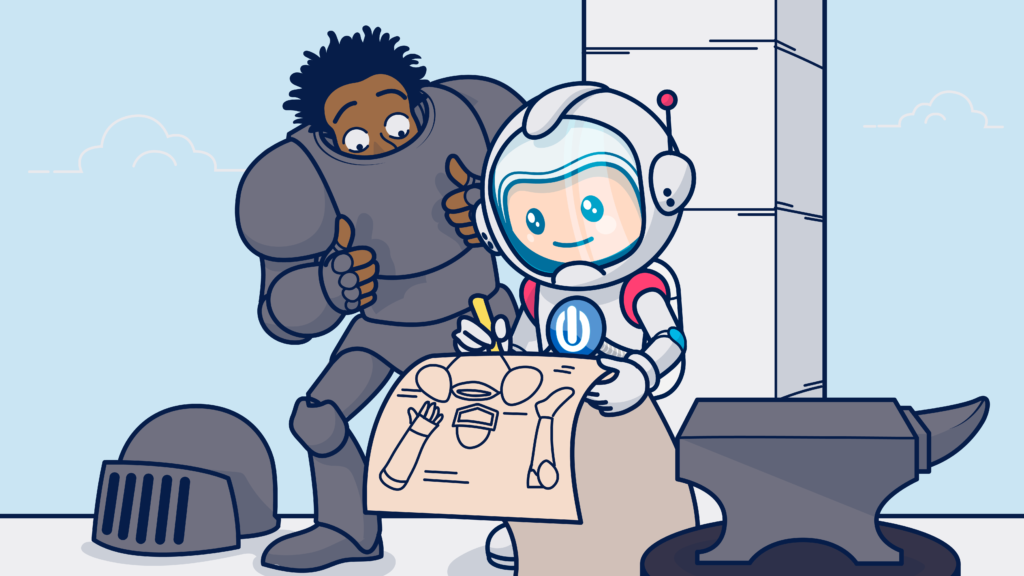
Keep consumer privacy and data protection rules in mind
Before you begin to create your customer data sets, a word of caution: Make sure that you have the customer’s full consent while acquiring data of any kind. After all, you wouldn’t get too invasive when taking a customer’s measurements (if you know what I mean!). You should apply the same respect to gathering customer data.
Even though most consumers want a personalized experience, they still have concerns about how brands use and protect their data. ISPs and governments have responded to these concerns by creating safeguards for consumers and penalties for brands that overstep.
For example, data bought or scraped from third-party databases often contain spam traps, which exist to warn ISPs of poor data practices. If you trigger a spam trap, you’ll quickly lose your sender reputation, and your deliverability will plummet.
That’s if you’re lucky and don’t get outright blacklisted.
Deliverability is just one of the problems you can encounter if you don’t respect your subscribers’ privacy. Regulations like the GDPR in the EU, CCPA, and CAN-SPAM in the USA, LGPD in Brazil, and many more, exist to protect consumers and their data.
Once you have your customers’ consent, what are some ways that you can gather the information you need to create a more personalized email experience?
Ask your customers directly
If you want to learn more about them in a personal, transparent way, ask. You’d be surprised at how many companies skip this step!
Asking customers for their data outright starts your relationship off on a foundation of openness and transparency. It’s an honest approach that increases your chances of earning customer trust. Encourage their cooperation by explaining why you are asking and how sharing additional information will benefit them.
Try these direct methods to ask your customers to share information with you:
Use a sign-up form
Sign-up forms are an excellent opportunity for your customers to tell you about themselves. They’re engaging with your brand and learning about all you have to offer – what better time to gather vital data?
Be careful, though. Don’t collect data just for the sake of collecting data. Every question you ask can cause friction in your customers’ experiences. We share strategies that you can employ to use your sign-up forms in one of our previous posts.
Provide a preference center
Your sign-up form doesn’t and shouldn’t be the last time you ask your customers for information. Provide your customers with easy access to a preference center where they can update you on their interests.
Go beyond the usual “unsubscribe” or “receive fewer emails” options when you create your preference center. Give them control over the information they share by creating a true preference center where your customers can tell you what type of content they want to receive and other details about themselves.
Use your preference center to find out what types of offers they like, which topics they want to read about, their favorite communication channels, and even which formats (video, text-only, audio) they prefer.
Don’t hide your preference center under the account or profile tab either. People change, interests evolve, sword-wielding heroes gain or lose weight.
Put a link to the preference center in every email’s footer so that when your customers’ preferences change, they can let you know! A 2020 study found that two-thirds of brands miss this engagement opportunity by failing to include a link.
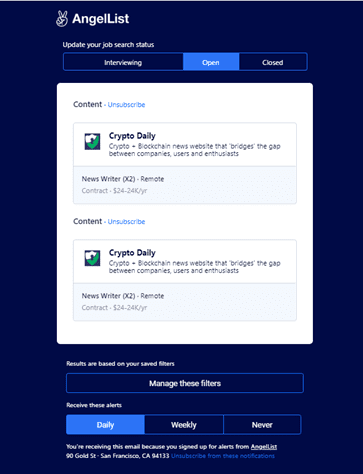
This email from AngelList includes customized recommendations based on the subscribers’ preferences and instructions for changing their preferences to improve their experience.
Send a survey
A link to your preference center gives customers control. But what if you don’t want to wait to hear from them? A survey is a great way to give them a little nudge.
A short, carefully crafted survey can provide you with answers to those burning questions you have about what your most-engaged subscribers want. Successfully achieving two-way interactions with your subscribers is also great for your sender’s reputation.
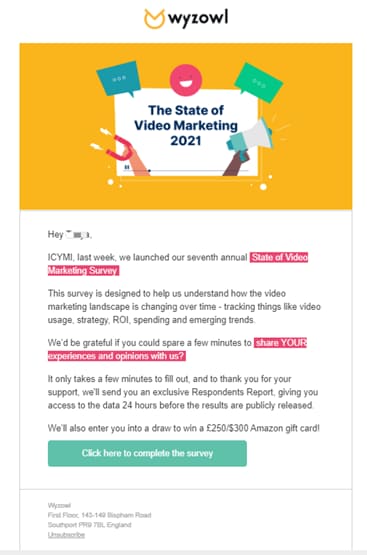
This survey from Wyzowl includes a promise to share the final results and participants’ chance to win an Amazon gift card.
Surveys don’t have to be long or limited to end-of-the-year mega studies. Sending short, engaging requests from time to time communicates to your customers that their opinion matters to you. Telling people how long your survey will take will raise your participation rates.
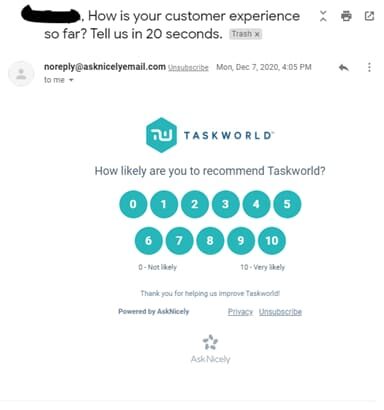
Taskworld’s survey encourages participation by keeping the request short and sweet.
Direct requests have their limits, though.
Collecting data directly from your subscribers demonstrates maximum transparency and engagement. However, there are some downsides to relying solely on direct data collection.
- First, not every subscriber will respond. That means your data will be skewed toward those who do. Dunno. Maybe only the tallest knights are willing to disclose their height. 🤔
- Second, the information you receive may not be entirely accurate. Did your subscriber provide their real first and last name when they filled out your sign-up form? (Hint: “Nunya Business” and “Buzz Off” aren’t real names.) Questions about behaviors and preferences can lead to some ‘not quite the whole truth’ answers too.
- Finally, each question you ask creates a data point and a friction point, so you can’t ask everything at once. Gaining all the information you’d like to have may take a long time.
What’s an alternative? Gathering information from your customers indirectly–by looking at their behavior.
Collect information from your customers indirectly
They say actions speak louder than words, right? Your customers’ interactions with your brand are a valuable resource for learning more about them. Each time they open an email, click on a link, or make a purchase, a new data point springs to life. Combine these indirect signals with their direct communications, and you’ll get a much clearer picture.
Where can you find this data?
Track subscribers’ email responses
Most email delivery services provide general information about your email campaigns, including open and click rates as well as the number of spam complaints you’ve received. ISPs and mailbox providers may provide you with aggregate data as well. We dived into email analytics and described those email metrics and more and how you can use them to increase your engagement rates.
But the data delivery doesn’t stop there.
You can also collect customer-specific information from some email delivery services and email campaign management platforms.
This granular data is essential for creating the kind of customized experience your customers expect. Ongage’s email campaign management platform records engagement and activity information for each contact. This information can be used to create micro-segments and event-triggered dynamic content. Integrate this information with data from other sources to create emails that are a perfect fit for their recipient.
Oula Lehtinen, COO and Co-Founder of Dravi Media tells us that he brings together data from multiple sources to deliver the content that interests each subscriber. Using this information plus Ongage’s dynamic content capabilities, he can create a single email campaign yet still deliver a customized view to each recipient.
Individualized open and click-through data can tell you about more than just your customers’ interest in your content. It can also tell you about their email consumption habits.
- Do they open emails in the morning over breakfast or wait until they have a break at noon?
- Do they browse their emails throughout the day or only open and engage at specific times?
Use this information to designate the best time to send emails and practice STO (send time optimization) with each subscriber. The above post provides tips for gathering data about your users’ online activity (on your website or elsewhere) to narrow down your timing even more, on top of the upcoming Ongage STO capabilities.
Consider their purchases, feature use, and browsing behavior
Clicks, time on site, pages browsed, and items purchased are all clues into your customers’ likes and dislikes. We know that consumers prefer to receive emails that reflect their interests. Use the information you gain from their visits to your website or uses of your app to understand those interests.
Spotify, for example, is a master at collecting and leveraging its customer data to deliver a dynamic email experience.
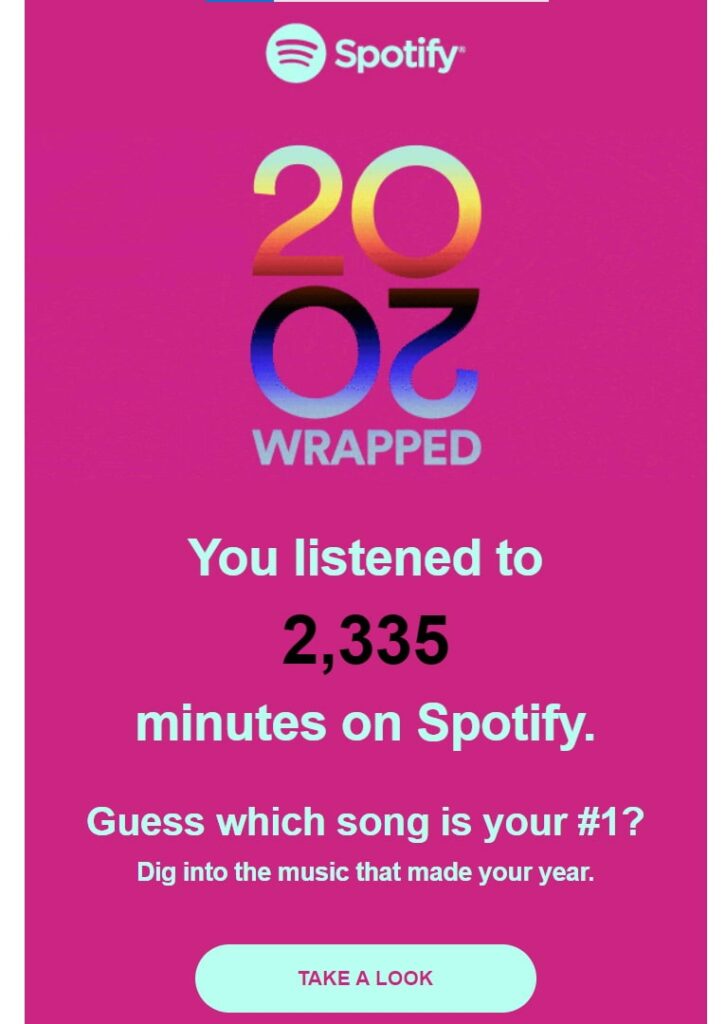
The data points that can guide your subscribers’ new insights include purchasing history or using an app’s features.
Collecting this data shouldn’t be a one-time effort, though. You wouldn’t want to base your whole idea of what a customer likes on one shopping trip–they might have been buying gifts for someone else.
One of the benefits of collecting information from multiple data sources is that you can view your customer from multiple angles rather than from a single perspective.
- Take your customers’ feature usage, for example.
A customer who pays for express delivery upgrades every time is more likely to be interested in an annual delivery upgrade membership than the customer who purchases the upgrade just once. If you relied on a single snapshot of these two customers’ behavior, you might assume their response to your offer would be the same.
- What can your customers’ website browsing history tell you?
Looking at their past browsing history can give you insights into their long-term interests. Looking at their browsing in real-time and responding with automated, dynamic messaging gives you a chance to help them find exactly what they are seeking at the moment they want it!
Complete the picture with external sources of information about your customers
Personalization is critical to brand success. It is no surprise that third-party providers offer ways for you to find out more about your customers. Sometimes the information comes in the form of general demographic or segment reports. Sometimes it can be pretty specific.
Remember our problem with Ms. Nunya Business and Mr. Buzz Off?
A data enrichment service can help you avoid personalizing your email with a fake name and give valuable segmentation data. By piecing together data across multiple channels, the most in-depth BI services can provide you with your subscribers’ full names, plus their geo-location, gender, household income, social media usage, and other helpful information.
Creative email personalization strategies to keep your marketing emails relevant
Okay, so you know how to learn more about your customers. Now, what can you do with that information? Get creative! Deliver a customer experience that captures your subscribers’ attention and their loyalty. Here are some of my favorite email personalization strategies.
Personalize by persona
Sometimes, you need to create at scale. How can you do that without losing that personal touch? Personalize by persona. This is a significant first step toward understanding your customers, testing content strategies, and delivering a more relevant message.
Here’s what I mean.
Say your plate-fitting business is really taking off. You’ve got orders coming in right, left, and center. So many that you can’t possibly make every single suit to personal specifications.
What can you do? Even if you can’t personally measure every customer and craft each suit individually, you still want everyone to have a suit that fits!
One method would be to create several different molds – templates to make armor for different builds and body shapes. One mold for boulder crushers, one for the skinny squires, and so on. Then, all they have to do is to tell you their ‘size,’ and you can serve up a ready-to-wear suit for non-cannon-fodders.
OK, it’s not the perfect, bespoke suit we’re after – but it’s still a great way to quickly get a lot of knights into armor that works.
In email marketing, your ‘armor templates’ are your segments.
You take customers who share certain sets of characteristics and group them into segments. This enables you to send out personalized messages at scale.
To make this a bit easier for yourself, it can help to assign each segment a persona. Putting a human face and personality to each segment can help build your personalized templates and even messages.
For example, you could name one segment ‘Martha,’ give the characteristics that will help to personalize your messages to her (her age, interests, and so on). Then, group all ‘Martha-like’ subscribers under her persona.
Some basic audience segmentation criteria include the customer’s age, location, gender, and household income. But, you can use the in-depth data you’ve gathered about your audience to create detailed or micro-segments. The more detailed your segmentation criteria, the better you’ll be able to craft emails that fit.
And to enjoy up-to-date results from your CRM or CDP, you can use the Ongage API to transfer data seamlessly between the two platforms.
This example in the Ongage knowledge center demonstrates how to create a segment targeting new subscribers who have yet to open one of your emails.
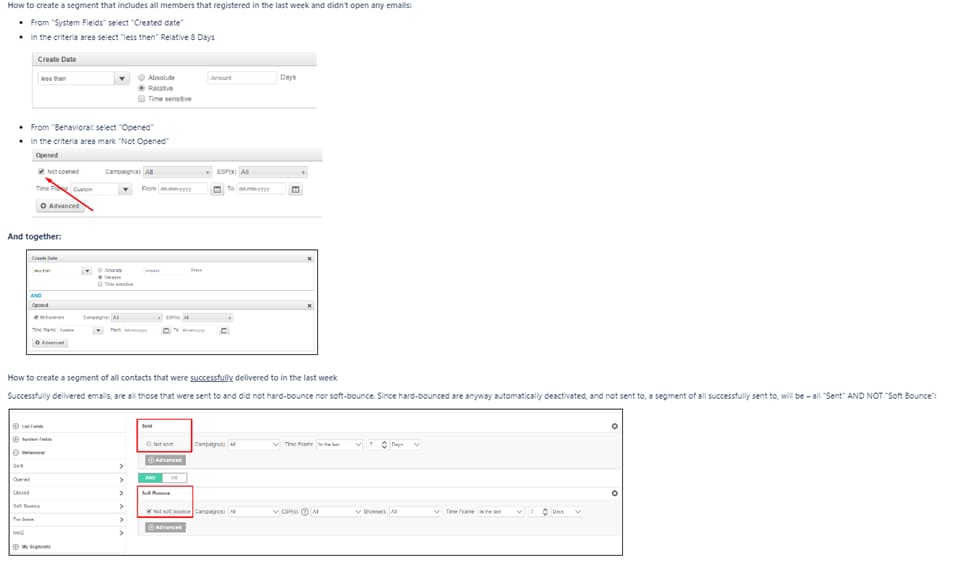
Once you have your segments in place, you can create relevant, personalized email templates. These emails will be customized to fit the needs, behavior, and overall profile of each segment.
UK grocery brand Oddbox used segmentation plus subscribers’ home address data to serve different ads to different customers based on their location.
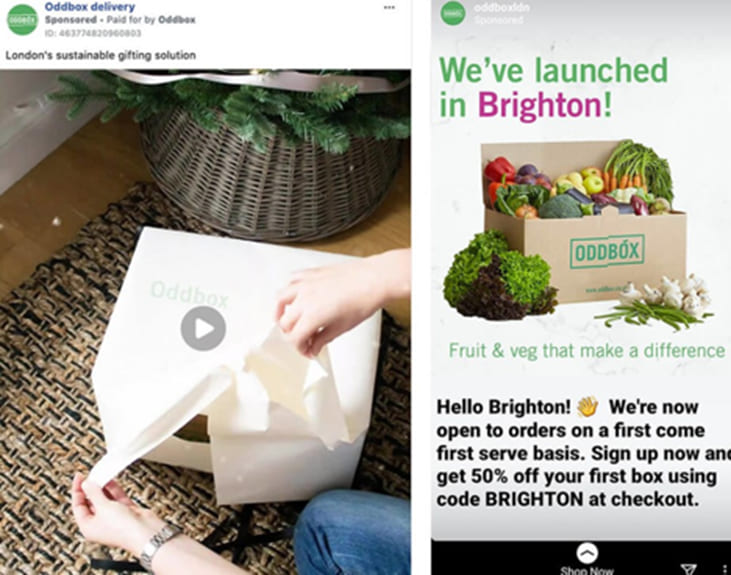
Use automation to streamline your processes for maximum engagement
During medieval times, a knight in need of armor may have had to travel for days to reach an available craftsperson and waited months to receive their final suit. Today, your customers’ journeys are short, and consumers’ expectations are high. Selling time is compressed, and you need to be ready.
Automation allows you to combine individual customer data with your templates and assemble one-of-a-kind messages in real-time–which is great because, as mentioned before, nobody will wait ever again for anything.
Or at least, they’ll strive not to do so.
Automated emails may be triggered by behaviors or events linked to a customers’ actions across channels. In addition to capitalizing on people’s needs at the moment, these timely emails advance the conversation. At the same time, the customer is actively engaged – not days (or even hours!) later, when their attention has shifted to something else.
How do you know when to send these triggered messages?
For some messages, such as happy birthday wishes, the date to send is fixed, but it is different for every customer. For others, you won’t know when to send the message until some other event occurs.
Creating multiple automated email campaigns triggered by various events enables Draivi Media client, Top5Credits.com, to reach subscribers more often, with more engaging content, with less effort, reports Lehtinen.
“We have automated the majority of our email communications with our users on Top5Credits.com with the help of Ongage. Ongage enables us to hit the inbox at the right time with personalized content based on user behavior and data. Using Ongage has a direct effect on the lifetime value of our users.”

How to set up your automation rules for maximum engagement
To make automation work for you, you’ll need to give your machine helpers instructions. Ongage’s automation rules provide a simple and intuitive way to do this from your dashboard. Just select your trigger and your data source. Then, you’ll create an action such as sending a specific email that will occur when the trigger is detected.
For example, if you wanted to send a follow-up email immediately after someone sign-ups to receive your newsletter, you would create a rule that watched for new sign-ups and initiated the email send once one was detected. Combine your automation rules with segmentation to further narrow when and to whom an email is sent. We wrote about the ways you can use email automation rules to put your email campaigns on automatic.
You can then create an email template containing personalization instructions such as a {{name}} field and other details. But you aren’t limited to just adding your customers’ names in your email’s salutation. So don’t stop there!
Maximize your email’s personalization by adding dynamic content that reflects your subscribers’ real-time or “subject to change” data by importing that information via API and including dynamic fields in your email template.
Also, experiment with unique ways to customize your messages. You can place dynamic fields in your emails’ subject line, body, or links.
Include your recipient’s name or location in the subject line of their email. Or, include dynamic content such as the title of a job offer or the location of a home for sale that might interest them based on their browser history.
Notice how Nextdoor Neighbor’s subject line targets a location-based segment while Zillow’s subject lines are based on the individual recipient’s saved searches.

Both types of subject lines tell subscribers what they can expect to find inside, enticing them to open the message.
Use dynamic content to customize the non-text portions of your emails, too.
Create one-of-a-kind emails distinctly at scale by placing dynamic content blocks in your templates to alter the images, offers, or other content subscribers see based on their unique characteristics.
This single template from PlayStation includes images and data that are unique to each customer. It’s modern magic!
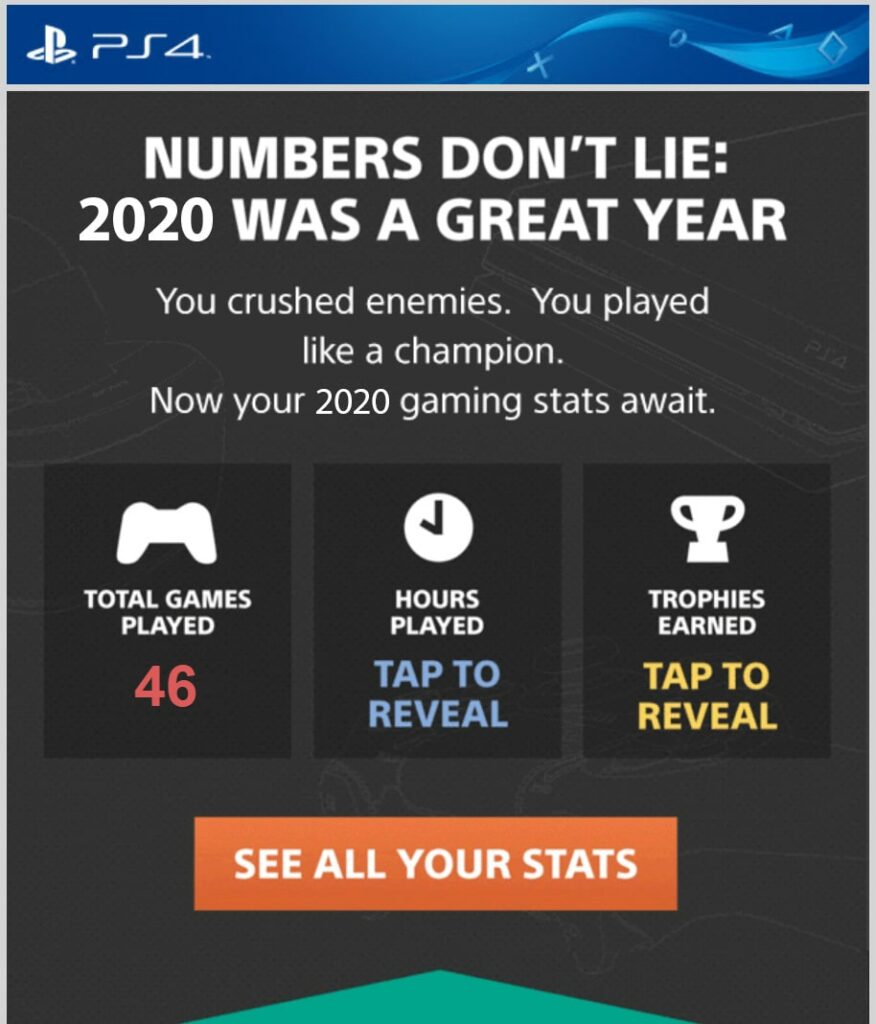
Another popular graphic-based dynamic component that works well for brands is the countdown timer. Use automation and dynamic fields to place a counter in your customer’s email that begins its countdown once they open the message.

Now, here’s the real icing on the cake, you can create an entire series of emails (a.k.a. a waterfall) and add instructions for each one to be automatically sent when a specific trigger or event occurs. Using Ongage’s automation options, you can automate personalized email communications that span each customer’s unique journey. Did they open their first welcome email? Their journey will proceed down path A. Did they make a purchase? Path B. If you can map it, you can automate it.

Personalized email automation in action – making it work for you
Now that you’ve had a peek at how to bring data and automation together, here’s a look at some of my favorite strategies.
Mark their customer anniversary
Celebrating an anniversary can be lots of fun. It lets both you and your customer look back on all the awesome stuff you’ve accomplished together.
This type of email keeps you top of mind and encourages your customers to stick with you, especially if you’re a fitness brand or another brand that helps people ‘level up’ somehow. People love to be reminded of how far they’ve come!
Add extra value by accompanying your marking of the day with a special anniversary discount or offer.
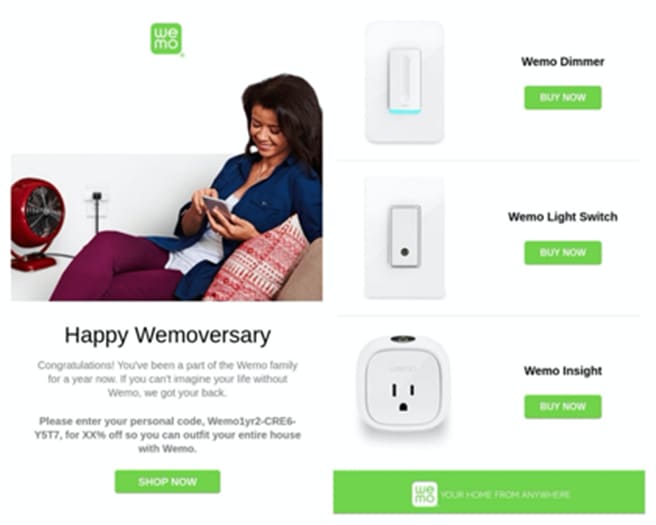
source: Really Good Emails
Wemo brand-awareness raising anniversary email includes customized product suggestions too!
Mark a significant milestone in your customer’s journey
Everyone loves a bit of acknowledgment now and again. Have you completed 100 Spanish lessons? Platinumed a PlayStation game? Hit your weight loss goal? Good for you!
Real-time data about your customers plus an automated rule helps you mark this special occasion.
Show your customer what they’ve achieved and how your platform helped them get there. You can even add a special offer to help them reach their next goal.
“Congratulations, Sir Knight! You have slain ten ogres! Now, how about a discount on this new helmet? It’ll help you take that total to fifteen.”
Here’s how Canva does it. The emphasis is always on the customer’s milestone, but they also subtly encourage them to continue using the app.
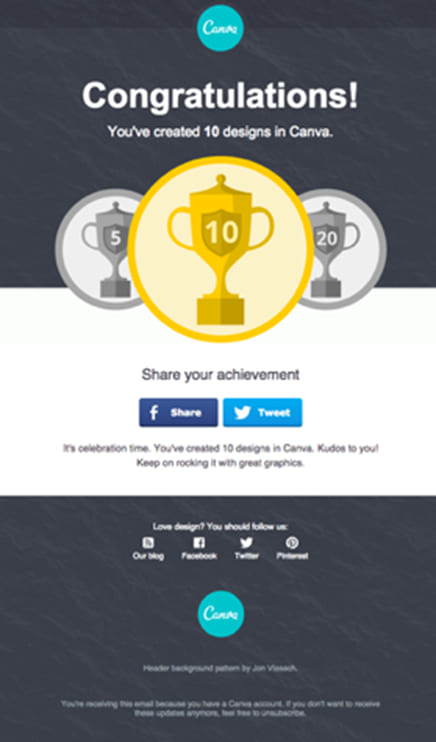
Wish your customer a happy birthday
Few things are more personal than a ‘happy birthday!’ on someone’s special day. Sending birthday wishes to customers on their birthdays can help to humanize brands. It tells customers that their favorite brands are thinking of them, just like their friends are.
As always, don’t forget to add value. A pretty birthday cake image and a bland birthday message are great, but you could go further.
One way to add value is to use discounts, gifts, and other benefits.
This birthday greeting from Thriftbooks is not only timed to arrive near the customer’s birthday but also includes product recommendations based on their browsing history to make it truly one-of-a-kind.
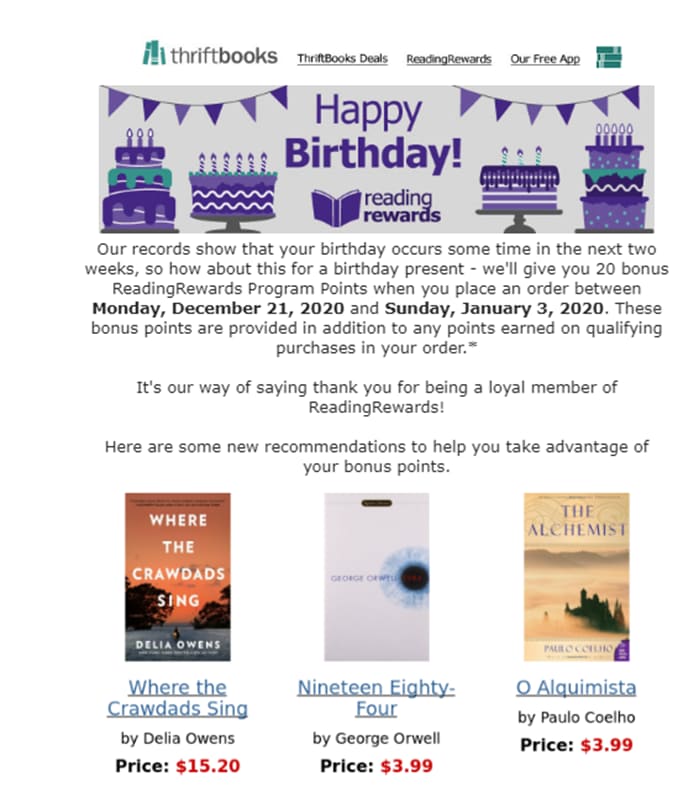
However, you don’t have to give your customer something with monetary value. For example, here’s a birthday email I received from singer Tom Odell. While the video itself isn’t personal, the email message helps sell this feeling, and it’s overall a nice effort.
Using text, images, and videos creatively shows you’ve gone that extra mile to make the customer feel special.
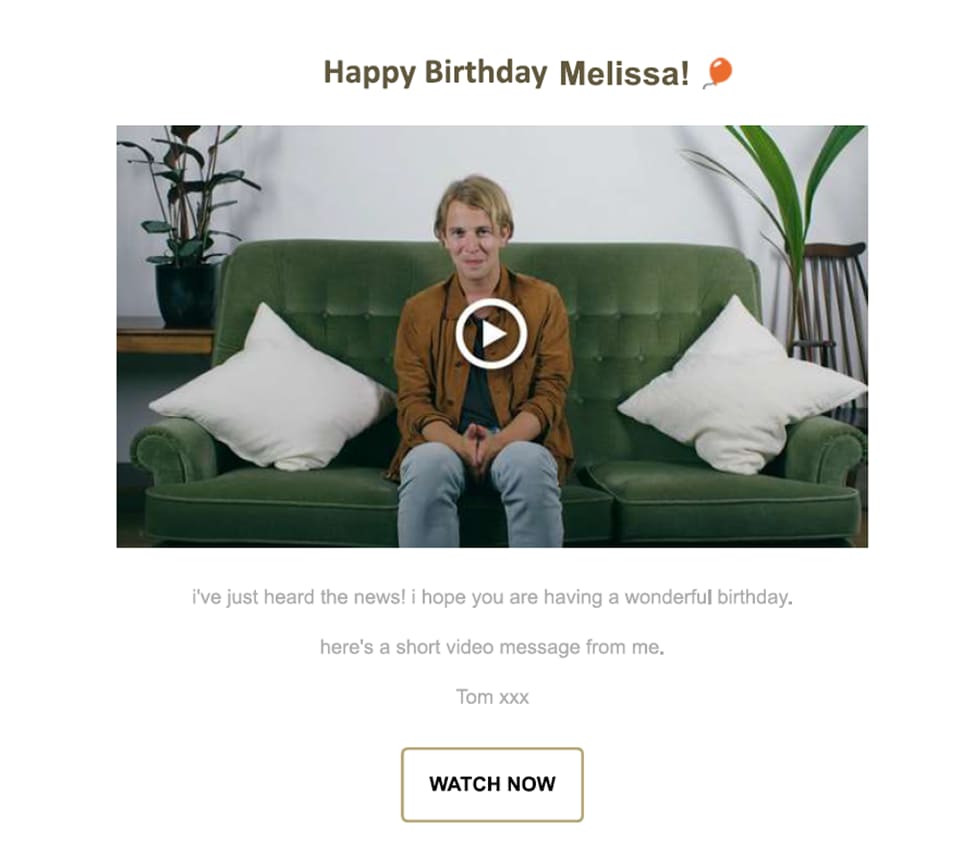
– Thanks Tom! –
Recover a customer who has abandoned their cart
Cart abandonment happens for many reasons, and it happens often. According to a report by SalesCycle, in 2019, the overall rate of cart abandonment was 84%. Fashion brands had the highest rate at 88.5%. However, when these brands sent follow-up emails, they achieved 31% conversion rates.
That’s a lot of sales recovered!
The more personalized and timely the recovery email, the greater the impact.
Use your automation rules to trigger an email that reaches out to customers shortly after they’ve left your website. Then, use dynamic content to give them a peek at the items they left behind.
This Old Farmer’s Store email not only includes images of the individual customer’s product selections but also uses dynamic blocks to add user-generated reviews to add a taste of social proof.
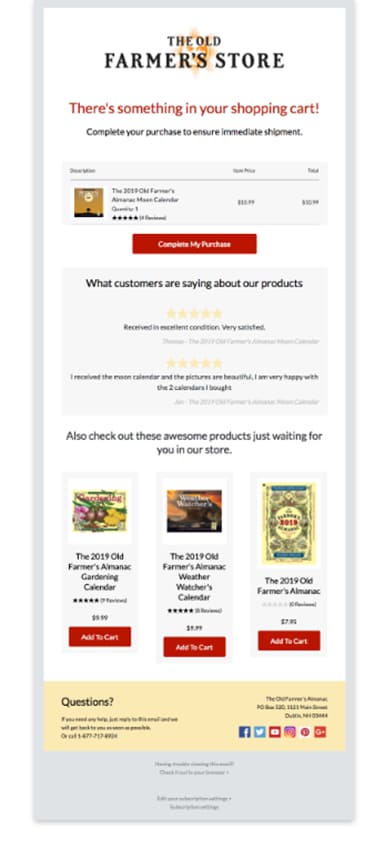
Want to increase your odds of conversion? Consider sending an incentive. In one survey, 43% of consumers said they leave items in their cart with the expectation that you’ll follow up and offer them a discount.
A full 18% of consumers admitted that they wouldn’t buy unless they get a deal!
Keep the conversation going with post-purchase emails
Post-purchase emails are an example for transactional emails that pose an opportunity for you to say thanks and add value. Sharing information such as care tips, recipes, or complementary products will help your customer get the most out of their purchase.
Here’s a post-purchase email from Clinique. Thanks to segmentation and data about the customers’ purchase history, this brand knows that this shaving cream has been bought as a gift.
This enables them to use witty copy and well-chosen recommendations to personalize this email.
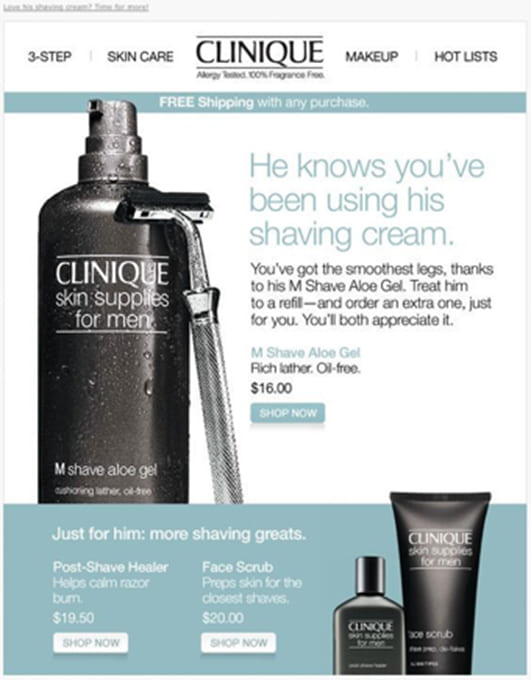
Sending a well-timed request for review is also a great way to obtain user-generated content from your most engaged customers while showing that their opinion matters to you.

Send support when it’s needed most.
Imagine you’ve created the perfect chainmail. Your customer takes it home and tries it on with the help of their squire. But, neither the customer nor the squire has ever put on armor before, and things don’t go quite as planned. They abandon your beautiful creation in frustration and disavow your work.
Bummer.
If only you could have been there to offer advice!
Now, imagine you’ve created a great app that will enhance your users’ lives. Will they abandon it before they have a chance to find out? Emails triggered by your customer’s use of certain features or other app activities can help your customers make it through the critical onboarding stage and beyond.
Are they taking advantage of everything your app has to offer? Did they leave the app before completing an important step?
Keep these questions in mind when collecting data on feature usage. They will help you to tailor emails based on customers’ activity.
Duolingo’s language learning app is most effective when customers make a habit of using it daily. The brand uses customized email reminders to help make that habit stick.
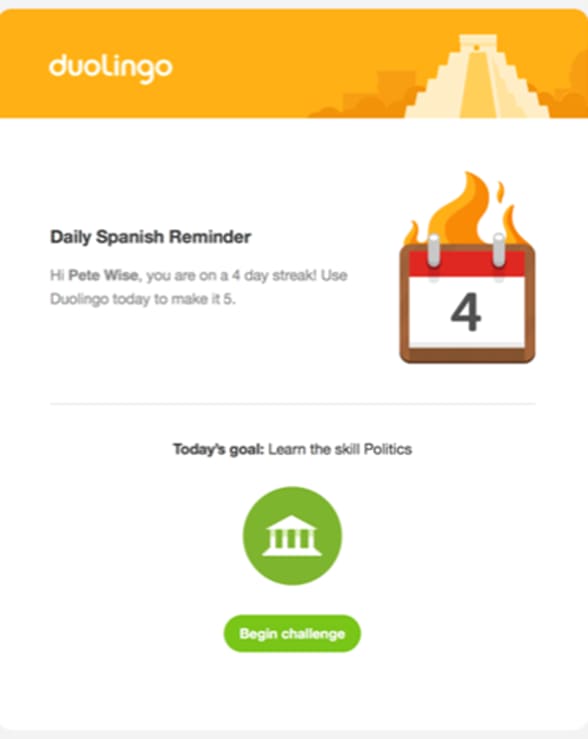
Give customers more of what they like
The way your customers interact with your emails can tell you a lot about them. Which subject lines grab their attention? What types of content do they click-through to see. This information can help you place each customer in the right segment and also send them customized content.
For example, by tracking which job leads an individual recipient clicks on, the job search platform Indeed gains a deeper understanding of the job seeker’s preferences. Then, it can use this information to send them more of the same.


Re-engage your lapsed subscribers
It’s a hard truth, but people won’t love you forever. Their interest in your emails may fade over time. This type of list attrition is expected.
When a subscriber’s attention begins to wane, use a re-engagement campaign to determine if they are gone for good or just taking a break.
You don’t want to keep your lapsed subscribers on active send lists because their lack of engagement can harm your deliverability. So, put them in a dedicated segment, then use a customized campaign to let them know that you are still interested in them.
Before you begin, keep these caveats in mind:
- Re-engagement campaigns often have low engagement metrics (by very definition, these emails are going to recipients who don’t engage much). Send them from a different IP to keep your main IP’s sender reputation intact.
- You need to know when to let go. If you’re not getting anywhere after one or two attempts at re-engagement, cut your losses and let your old subscribers go their own way.
- Understand that re-engagement emails aren’t like other kinds of interactions. They will need a different strategy than your regular email marketing campaigns.
How can customization help you rekindle a subscriber’s interest?
First, flattery will get you everywhere, right? It’s human nature to be more interested in someone who expresses interest in us. A personalized message that addresses the recipient by name and recalls some of your good times together may get you back in their good graces. Giving your customers choice and control can help you re-engage their attention, too.
Of course, giving an exclusive offer can’t hurt.
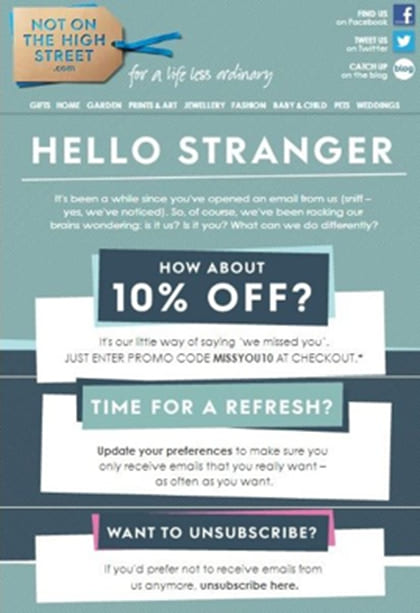
Not On the High Street combines an offer with a prominent link to their preference center to put the next move in their customers’ hands.
When is low engagement an opportunity? When you can use it to start a conversation. A message that tells it like it is: “You haven’t interacted with us in 30 days! Shall we say goodbye forever?” can have a powerful impact.
Here’s how Skyscanner gives lapsed users of its service a nudge to come back.
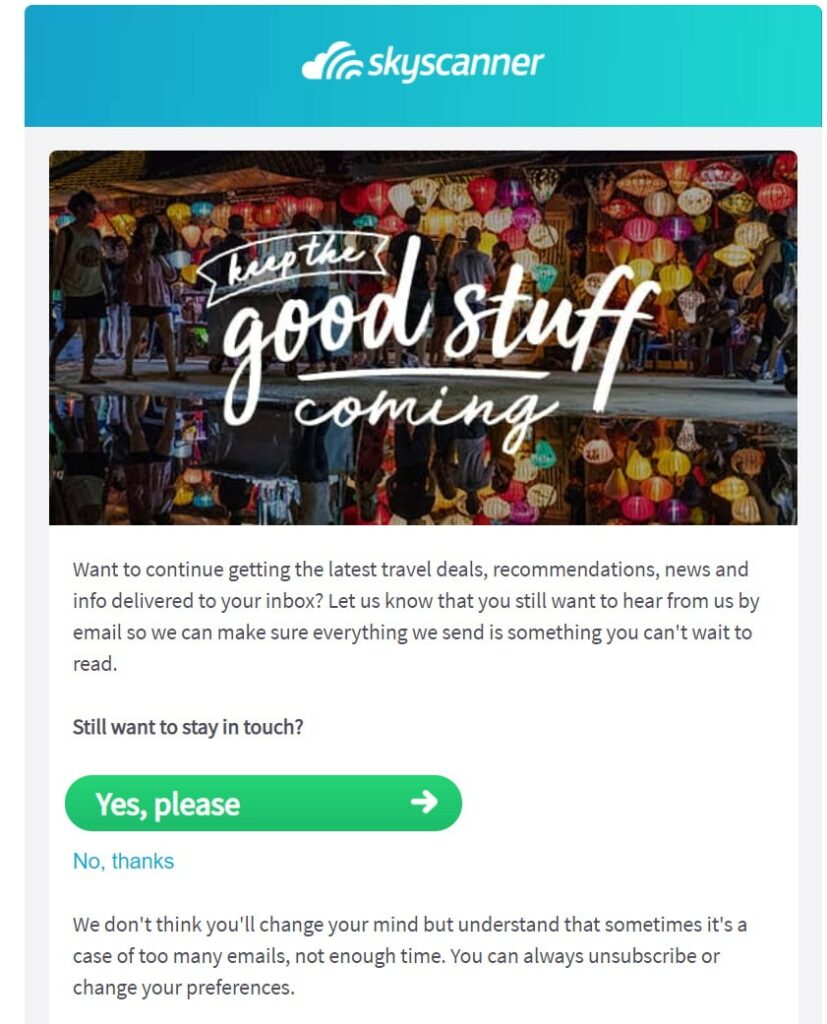
Advice for a smooth personalization plan
As you explore the various ways to personalize your customers’ emails, keep the following thoughts in mind.
- First, while email remains the best way for brands to communicate with their customers, customers themselves are channel-agnostic. They don’t care where the message comes from, but they will notice that personal attention is lacking. Ensure that you incorporate personalization into all of your channels, from social media to your website landing pages.
South Shore Rescue’s landing page maintains the personal approach by greeting visitors by name.
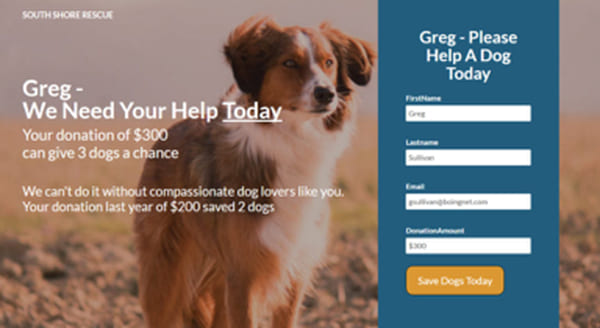
- Second, your customers value personalization when it benefits them–it saves them time, money or caters to their social needs by making them feel appreciated or welcomed. They want emails that make them feel connected, not creeped out.
Be careful when using information that didn’t come directly from your customer or touches on subjects that most would consider private.
Say your data sources tell you that a customer is shopping for a new home appliance, so you send an email touting several suitable products. But, your customer doesn’t remember shopping for that appliance online–they only remember talking about it with a friend while their phone was nearby. Creepy.
Save emails about highly personal topics such as health, fitness, or relationship advice for situations where your customers have made it clear they welcome the information.
For example, the diabetes management app Livongo collects data from a connected glucose measurement device and uses this information to help users keep their diabetes under control. That’s a good thing. However, no matter how helpful you think you can be, collecting and creating this type of content without permission would be a massive violation of your customers’ privacy.
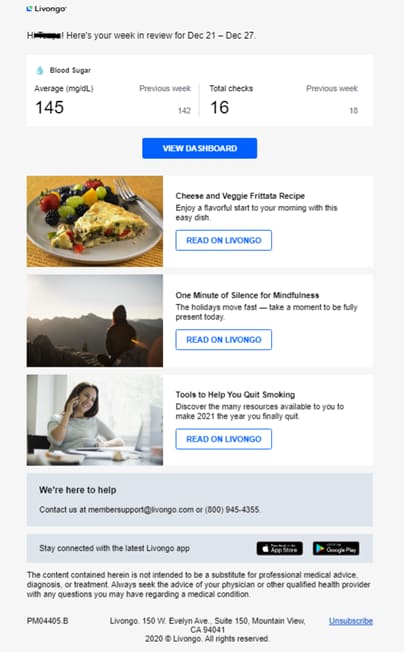
Finally, consumer behavior and preferences are constantly changing. You don’t see people wearing metal suits of armor anymore, no matter how well-made it is.
Right? 🙂
The future will hinge on 1:1 personalization across multiple channels, using multiple formats.
Implementing innovative email marketing strategies today will prepare you for this future and put you ahead of your competition when it comes to earning customers’ attention. Try new things and test new data and automation combinations. Use all the tools at your disposal creatively to create content that surprises and delights your customers. Ongage is here to help.
Ready to take email personalization up a notch?

Personalized marketing is no longer just a good idea. It’s necessary if you want to build lasting customer relationships.
Follow the armorer’s way: get your customer’s ‘measurements’ (data), and build suit templates in varying sizes (segments).
Add in automation rules, dynamic content, and special touches for special occasions – and talk to us to mold it into something perfect.

